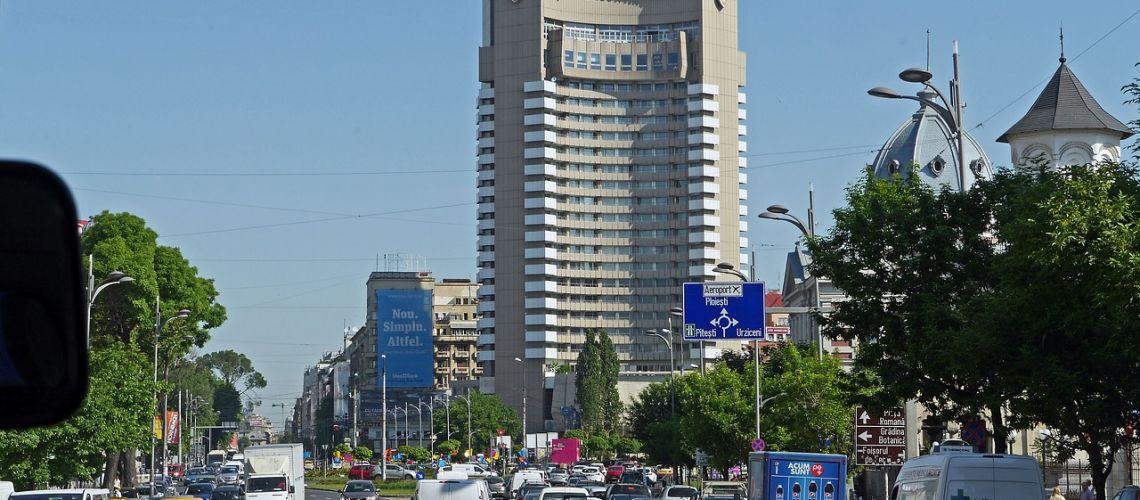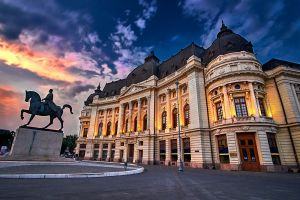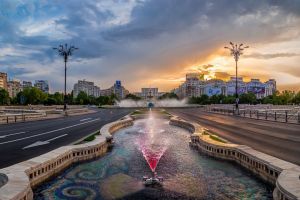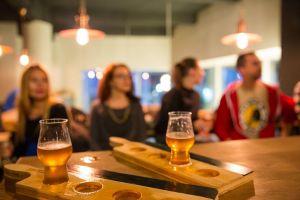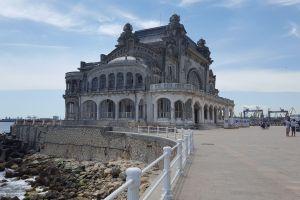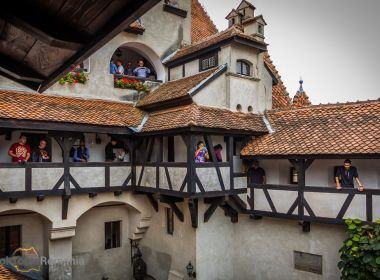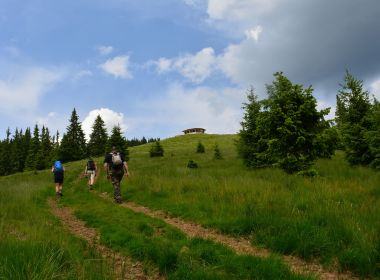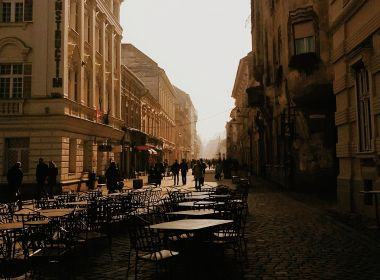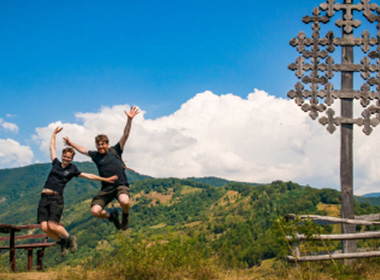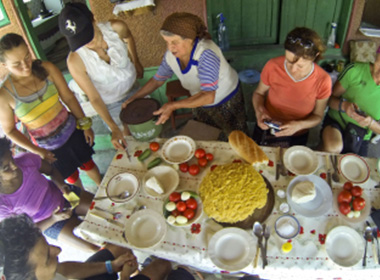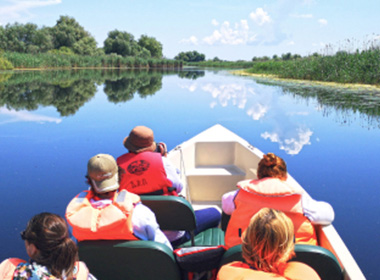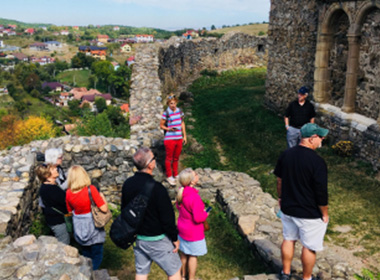Are you visiting Bucharest soon? Looking for info about Otopeni Airport shuttle bus, taxi and private transfers? Want to know how to get from Bucharest airport to the city centre and Old Town area?
Stop looking somewhere else - you’ll find everything you need in this complete practical guide on Bucharest airport, how to get to the city center and public transport in Bucharest and how to use it to visit tourist sights. We're locals who live here and will give you practical info and real advice from the ground.
You may also want to check our tourist guide on what to do in Bucharest with 50+ ideas on places to visit, things to do, where to go out and tour ideas.
Table of contents
- 1. Is Bucharest safe to visit?
- 2. What expect when visiting Bucharest
- 3. Official tourism in Bucharest - don’t count on it!
- 4. From Bucharest Otopeni Airport to the city center
- 5. Car rentals. Private transfer from Bucharest Airport to other cities
- 6. Using public transport to visit Bucharest
- 7. Bucharest Gara de Nord train station
- 7. Bucharest taxis: costs, tips, safety and apps
- 8. Bucharest metro & public transport
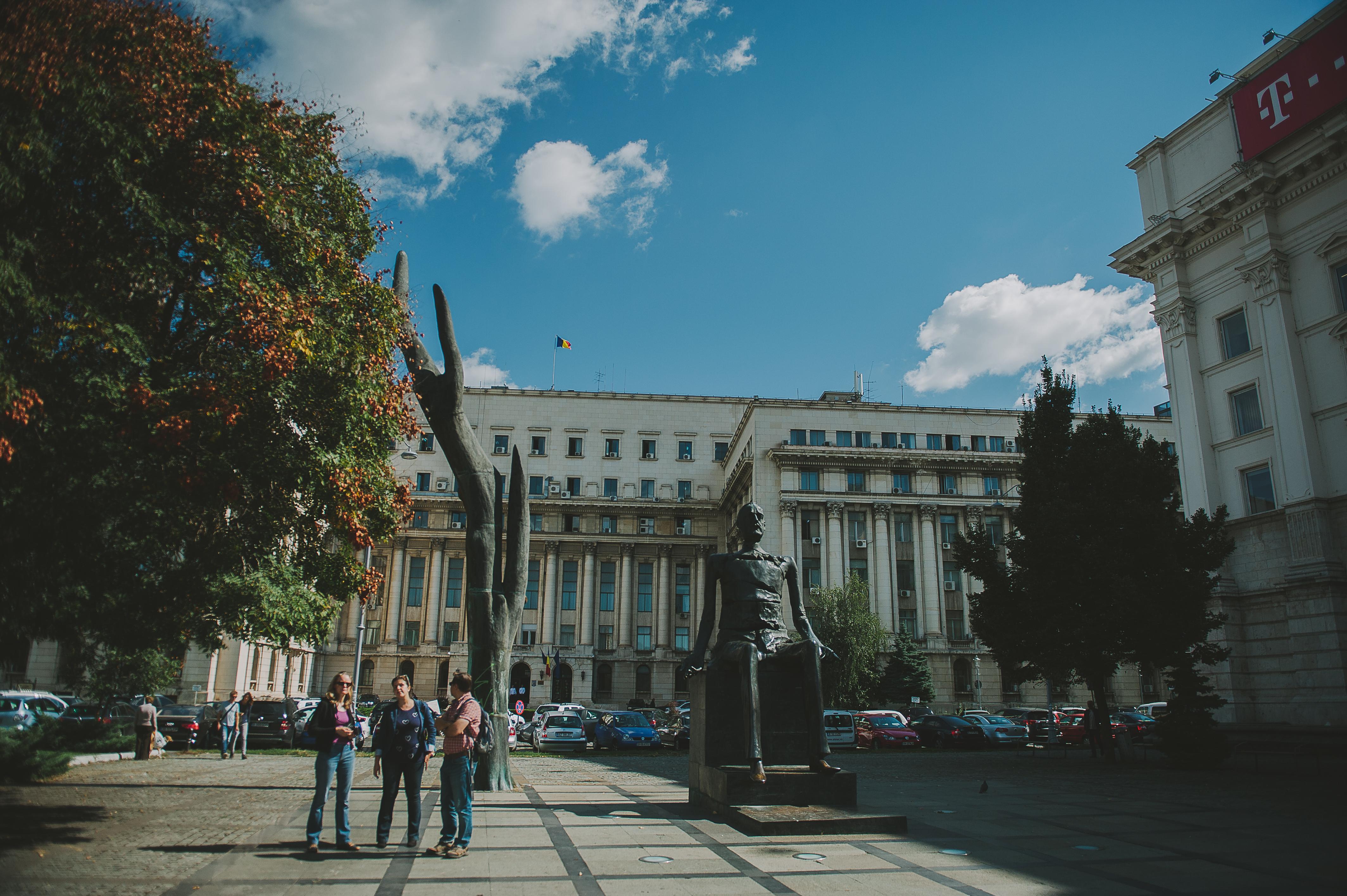
1. Is Bucharest safe to visit?
Romania’s capital may not have the best reputation. Or any reputation at all, really!
It’s still an undiscovered and lesser-known travel destination in Europe that can seem rough on the edges for first-time visitors who don't know anything about Romania, come with misconceptions about our country or heard about tourist scams and safety issues.
I’ll be honest - the city can be a challenge for some travellers. But if you're not quick to judge a book only by its cover - then you'll see that Bucharest is in fact a very safe city and we wrote an article on Bucharest safety to tell you more. We also wrote one with general Romania safety advice in case you're planning to visit the country as well.
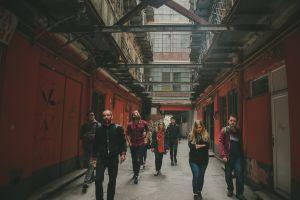
Untold Stories of Bucharest: Prostitution, Holocaust and Communist Terror
Start from: Piata Romana (Romana Square)
So if you’re an informed traveller, generally cautious and not looking for trouble - you'll be ok. Besides the usual tourist scams (stay away from anyone ‘offering’ their services or asking for help in an unusual way), pick pockets in crowded areas and rude taxi drivers, there’s nothing in particular seasoned travellers should be worried about.
2. What expect when visiting Bucharest
Romania's capital has changed a lot over in the last 10-15 years and is now a beautiful city of contrasts with a vibe of its own:
- Oriental influences
- Balkan feeling
- Western culture and lifestyle
- ‘old world’ French-aristocracy feeling
- mixed with communist landscapes and
- an undeniable lust-for-life Latin blood.
It was once known as Little Paris of the East because it was heavily influenced by French culture and architecture during the 19-20th centuries.

The "Little Paris" Bucharest: Architecture, Old Houses & Bourgeois Stories
Start from: University Square
Unfortunately, when the Romanian communist regime came to power in 1948 any signs of wealth, aristocracy and opposition were eliminated and the city’s layout and social composition were profoundly transformed.
The massive Palace of Parliament or House of People dictator Nicolae Ceausescu called it, is Bucharest’s most famous landmark and controversial building.
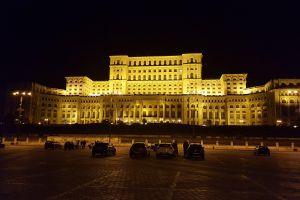
Complete Bucharest Communism Tour: Palace of Parliament & Ceausescu's Home
Start from: Bucharest
Weather in Bucharest is generally warm and pleasant. Like the rest of Romania, the climate is temperate-continental and all 4 seasons are still present. The best times to visit are during Spring (March - June) and Autumn (September - October) with averages of 15 - 25 Celsius, just perfect to enjoy the city.
July-August can get pretty hot (34+ Celsius) and heatwaves are frequent, but everyone in the city got used to it and AC is pretty common. Winters are generally frosty (around 0 degrees) and the amount of snow varies from none to a lot, but in December the city is beautifully decorated for Christmas and there’s mulled wine everywhere!
3. Official tourism in Bucharest - don’t count on it!
Local authorities in Bucharest are doing a very poor job at promoting the city, developing tourist infrastructure and making visitors feel welcomed.
This is the biggest reason why our capital is not very well-known as a travel destination and why I recommend you continue reading this article and our extensive guide on things to do in Bucharest.
There are 2 tourist information centres:
- in the underground passage at Piata Universitatii
- in the main Bucharest Train Station (Gara de Nord)
But last time I checked (June 2023) both were either closed or had irregular opening hours...
Street maps with public sights are few and the only ones I know of is in front of the Romanian Atheneum. So the best way to explore Bucharest's major sights and learn about the city's history is to go on a guided walking tour - unless you prefer to wander on your own with your eyes in a guidebook!
There used to be a Bucharest tourist bus doing hop-on hop-off routes on major boulevards and landmarks but due to Covid in 2020 the service has been suspended and there is no news on whether it will come back again.
And there is no official Bucharest tourist card with tickets and discounts to major attractions like in other tourist capitals.
Luckily, English in Bucharest is very common among young people who speak fluently and are very friendly. In restaurants, cafes, bars and tourist areas such as Old Town you won’t have any problems and even menus are in English.
Other languages frequently spoken are French, German, Italian and Spanish, as the Romanian language is part of the Latin family. So if you need help or directions, you’re better off asking a young person rather than the middle-aged lady working in the subway ticket office.

Bucharest Street Food Tour: Farmers' Markets & Hidden Streets
Start from: University Square
There is no official Bucharest tourism website either and a lot of websites or blogs have info that is either outdated or confusing especially after the Covid pandemic when a lot of things changed. So be careful where you get your info from -- luckily you have a Romanian Friend to help!
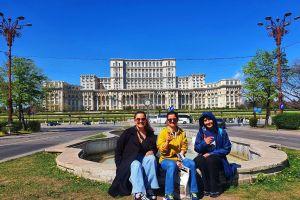
Communist Walking Tour: History, Megalomania & Hidden Sights
Start from: Revolution Square next to the Rebirth Memorial (The patatoe)
Travel guides from foreign publications (LonelyPlanet, RoughGuides etc) and TripAdvisor rankings are useful if you want to see the typical tourist attractions and places where all the tourists go - but none of the locals or alternative things to do. The popular Caru’ cu Bere restaurant is a good example of this and practically lives off of tourists!
4. From Bucharest Otopeni Airport to the city center
The busiest airport in Romania is Bucharest Henri Coandă International Airport and is located North of the capital of Romania in the small town of Otopeni - that’s why the short name for the airport is Bucharest Otopeni. The airport's official website is helpful and in the airport you'll find lots of signs to guide you around.
Our guide on how to visit Romania for the first time will be useful if you're looking for more info about visa, currency and other tips for planning your trip.
Local tip:exchange houses in the airport offer very bad rates compared with what you can get in the Romanian capital or any other city. Change 20 Euro for taxi fare or use an ATM from a local bank (avoid Euronet!) to get some Romanian Lei.
Bucharest Otopeni Airport is about 20 km away from Bucharest city centre (Piata Universitatii or Piata Unirii). Depending on the time of day you travel, traffic and means of transport you'll need about 25-50 min to make the journey. For costs, see below.
The arrivals and departures terminals are located in separate buildings connected by a 10-min walk tunnel. So if you arrive in Bucharest but want to visit Transylvania, Maramures or a different part of the country then you should get on an internal flight. Check our guide on public transport in Romania for more info.
Local tip:food and drinks are outrageously expensive in Otopeni Airport departures terminal (2-3x higher prices). Pick up a sandwich in the city before heading out
There are 3 ways to get from Bucharest Airport to the city center:
- taxi or private transfer (moderately fast and convenient, 12-25 Euro)
- shuttle bus (public transport, cheap but slow, 2 Euro)
- express train to North Train Station (fast, cheap, not very convenient, 2 Euro)
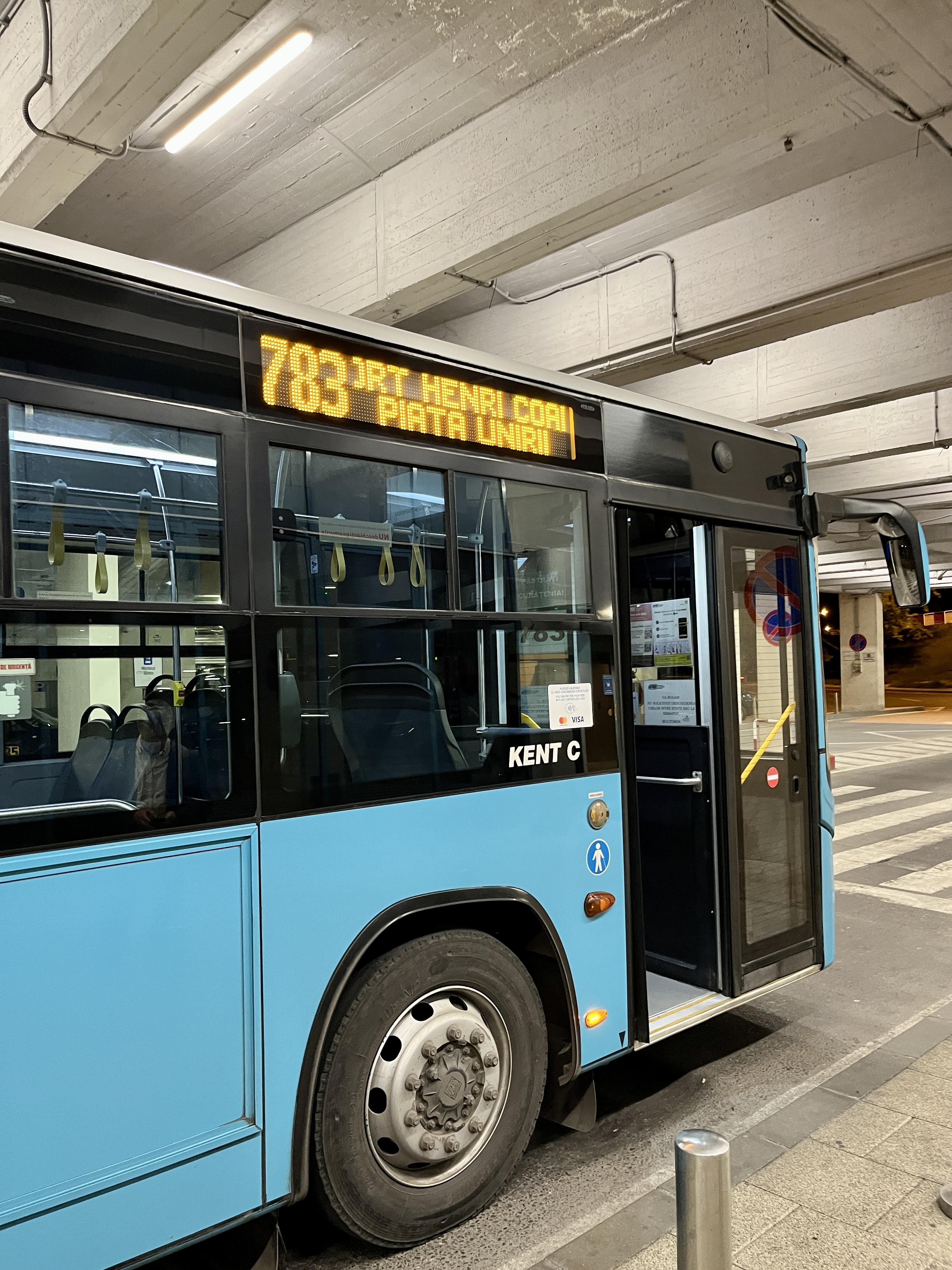
- 1. Bucharest airport shuttle
STB (Bucharest’s public transport company) operates the only airport shuttle bus from Otopeni Airport to Bucharest city center (final stop in Piata Unirii) number 100 - for checking the route you can use Info TB mobile app (available in Google Play and Apple Store).
The route comes fairly close to major Bucharest hotels, metro lines station and the Old Town area.
The Bucharest airport shuttle bus leaves from the ground floor of Bucharest airport (international arrivals area is at 1st floor) as you exit the terminal building on the right every 15-20 min on a regular daily schedule (Mon-Fri 6:00-23:00) and every 20-30 min on weekends and holidays.
A two-way ticket is cheap (8,5 Lei ~ 2€) and here's how you can buy them:
- from the automatic red ticket machine located exactly where the bus leaves
- using your bank card for a contactless payment on the ticket machine inside the bus (easiest)
- by SMS - text the number 7458 with the text C - more info on this page
- using the mobile app 24pay
Please note that drivers don’t sell tickets.
The bus operates on the same express route from Bucharest city centre to Bucharest airport departures terminal.
There is also the option to take the *bus 442*, but note that this one stops at Piata Presei Libere, located in the northern part of the city.
Local tip:as busses can get stuck in long queues of traffic especially in the afternoon rush hours (15:00 - 18:00) when going towards the airport, I wouldn’t recommend taking the airport bus if you’re on a tight schedule or not incredibly budget-conscious.
There are no other airport shuttles or express buses taking you to the city and the ones you may see are either doing a private transfer or will take you to other cities (read more in the section below section).
- 2. taking the train from Otopeni Airport to Bucharest North Train Station
There is a direct train connecting Bucharest Otopeni Airport with Bucharest Gara de Nord (main train station) with no other stops along the way. The airport train station is located outside the terminal building on a suspended platform with a green cover. Once you get out of the airport from the arrivals hall you'll see it.
The train runs every 40 min from either these stations and you can check the schedule here. The ride takes 25 min and the ticket costs 5.5 Lei (just over 1 Euro).
Train tickets can be bought when on the platform, in Gara de Nord from an automatic ticket machine or online here or directly on the train.
While the ride to the city is fast, Gara de Nord is relatively far from the city center or the Old Town area where most tourists choose to stay. But the train station has a metro station of its own and plenty of reliable taxi cabs waiting outside.
Most likely from there you'll have to take another means of transport or use public transportation. So if you're not in a rush and looking for affordable prices - this is a good option.
- 3. Taking a taxi from Bucharest Airport to Bucharest city center
Getting an airport taxi transfer from Otopeni Airport to Bucharest city center or any part of the city is quick, convenient and reasonably priced (50 - 80 Lei or 10 - 17 Euro). It's a good option especially if you're after a long flight!
Years ago there were some problems with aggressive taxi drivers poaching unsuspecting tourists and charging more - but authorities have fixed this and it’s no longer the case.
But even today this may happen: when you exit the arrivals hall you'll see a line of taxi cabs waiting outside with 'friendly' drivers offering their services. While some may be honest, it's easy for unsuspecting tourists to fall into the trap of a pirate taxi driver. Even so, the most they can do is rip you off for an extra 10-15 Euro...
So for your peace of mind follow our advice below on how to get a reliable Bucharest airport taxi to the city center and you'll be ok!
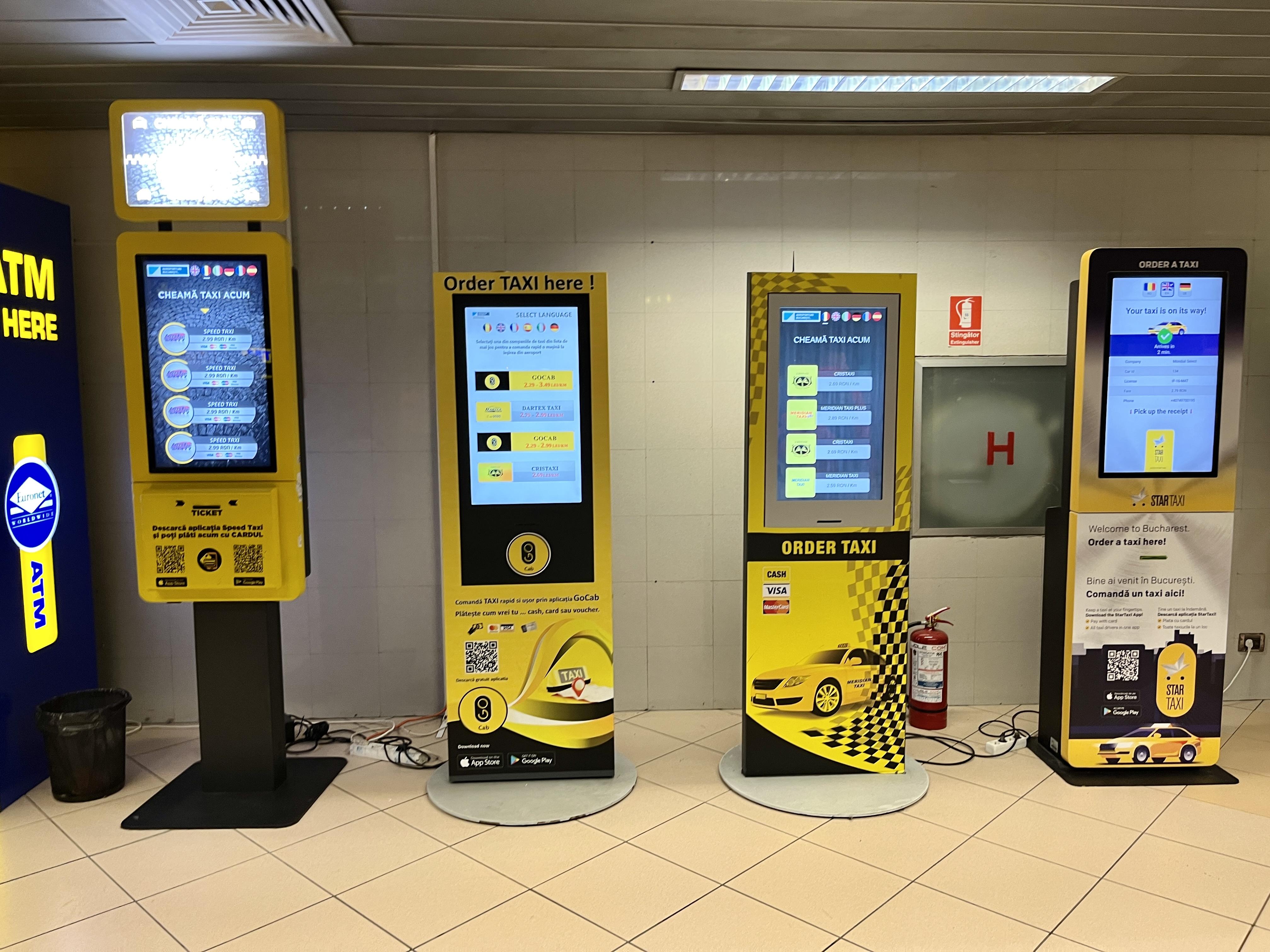
First, look for these yellow touch screen terminals on both sides of the door you'll exit after the baggage claim area. These are in the international arrivals hall on the 1st floor.
Use them to order a reliable taxi with a fair price from the pre-authorised local providers. I recommend Meridian and Cristaxi. You will get a ticket with the details of your transfer to Bucharest which you need to hold on to and show to your driver.
Then, walk outside the terminal building and wait for your taxi to come from the ramp on the left side.
You'll get a taxi ride to Bucharest with a fair price but the disadvantage is that you can pay only with Romanian Lei in cash (exchange a small amount, or take out from a nearby ATM, or when in the city center). Some drivers accept Euro and will give you back RON in change.
Second, a great alternative that avoids regular taxi drivers is to use the popular ride hailing apps Uber or Bolt.
- the booking process is easy, you can enter your destination address clearly and you can see the route on the way
- drivers are rated and you'll likely have a positive experience with them; most of time you'll get an English-speaking driver, unlike regular taxi drivers
- cars have a designated pick up point (on the right side of the parking platform, just as you exit the airport building on the 1st floor)
- you have the option to pay in the app via your debit or credit cards
This type of private transfer is usually at a fair price although during rush hours or when there's high demand, a fair surcharge may be applied. But even so, the most you could end up paying is around 80 lei (18 Euro).
Local tip:as a local, I’ve always used Uber or Bolt to get to and from Bucharest airport to the city center because I've got more important things to worry about than a couple of Euros, and I value my peace of mind after flying!
Other tips for your safety:
- if anyone approaches you in the airport offering taxi services, refuse
- if a taxi driver wants to negotiate the fare, refuse
- before boarding taxi cabs make sure fare meter is working and the driver starts it; if they don't or they tell you it's not working - refuse the ride and get out
- if you can’t find a taxi you can walk 10 min to the Departures terminal (a long corridor on your left as you exit baggage claim) and get one of the taxis dropping passengers off there
5. Car rentals. Private transfer from Bucharest Airport to other cities
All the major car rentals companies (Sixt, Avis, Hertz, etc) are present in the country. You can find their offices on the ground floor of the arrivals terminal building. Expect the usual booking process and formalities. If you know your travel dates then sending a prior request for your rental car is best to avoid extra waiting time.
If you're on a business trip, traveling with a large group or need baby seats then requesting a private transfer to Bucharest city center is your best choice. We work with several companies and professional drivers and can handle any type of request - just send us a message with your details and we'll take it from there.
If you want to travel from Bucharest airport directly to other popular destinations to visit in Romania such as the cities of Brasov or Constanta you can choose from a shuttle service with a minivan or minibus, or a private transfer.
To get from Bucharest Airport to Brasov there are 2 options:
- take the direct train to Gara de Nord and from there catch a train to Brasov
- use a shuttle company that runs straight from the airport (we typically work with these local providers: Kron and Direct Aeroport).
For transfers to other destinations, or if you need a child seat - contact us and we'll help you out.
We also organise day tours or multi-day itineraries with pick-ups starting from Henri Coanda Airport and can customise them to fit your itinerary. FYI - Dracula Castle (Bran Castle) is 3h away and the only way to get there is with a private airport transfer. Once again - contact us and we'll help you out no matter your group size :)
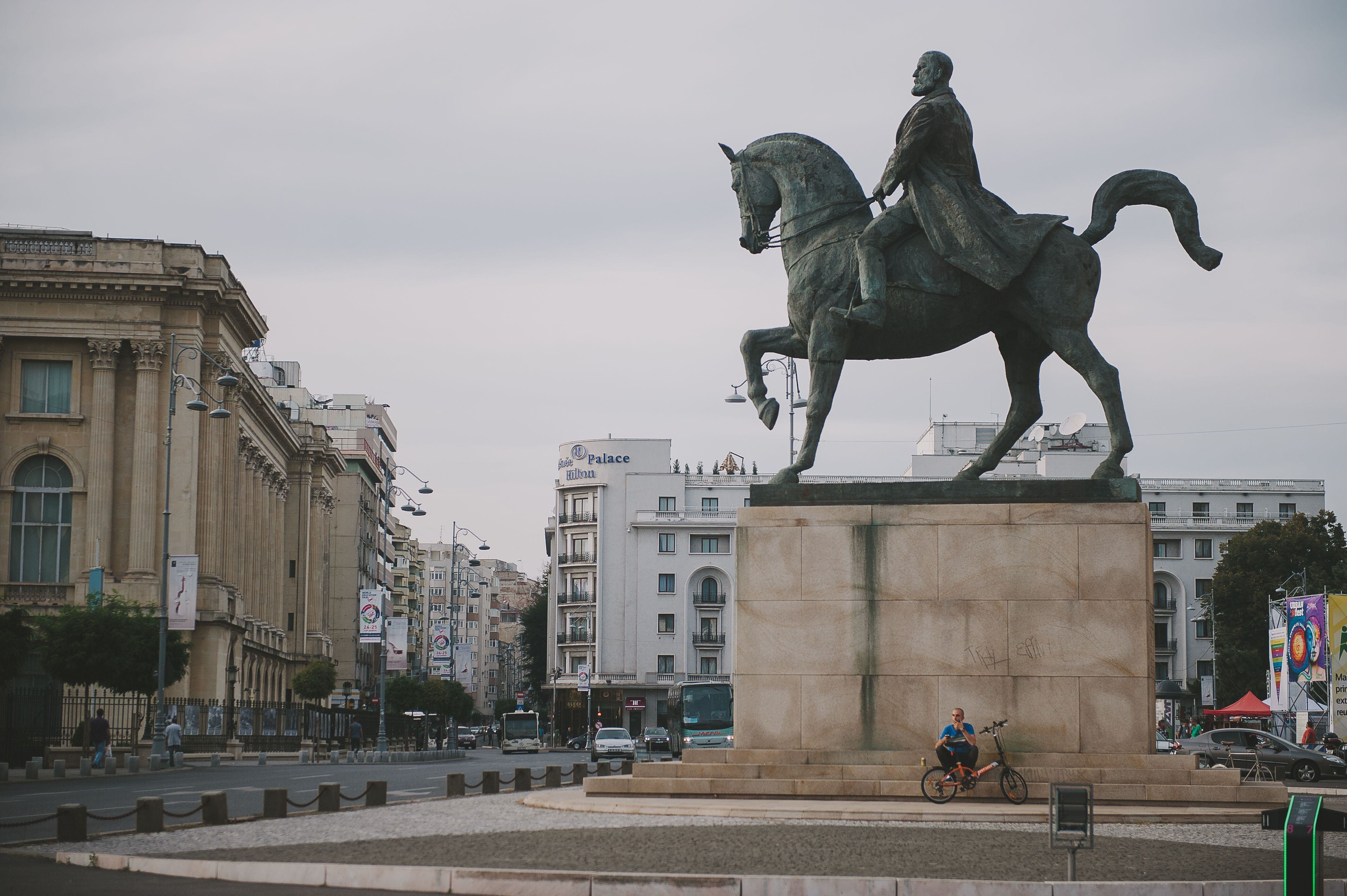
6. Using public transport to visit Bucharest
Start first by checking our guide with things to do in Bucharest to learn about top attractions such as Calea Victoriei, the Romanian Atheneum, Revolution Square, Palace of Parliament, museums and the best place to have a typical Romanian meal!
The major attractions, landmarks and sights in Bucharest are located on a North - South line from Herestrau Park to Unirii Square, easily accessible using the blue metro line (M2).
Most tourists want to go to Old Town area (Centrul Vechi - Lipscani - Smardan street) where the best bars in Bucharest are - and that's easily accessible from Piata Unirii or Universitate metro stations.
7. Bucharest Gara de Nord train station
The main train station in Bucharest is Gara de Nord (translated simply as North Train Station). This is where all national and international trains arrive and depart. If you come across other train stations such as Bucharest Baneasa or Basarab, just ignore them.
Gara de Nord is always bustling with activity will give you the usual 'train station' experience: confused travelers, rushed locals, bored station workers, and, of course, scammers and beggars trying to get something out of everyone!
Inside the train station there are many places to get food, sandwiches, drinks and there’s even a supermarket and exchange office.
If you’re looking for info about buying train tickets and navigating Romania by train, check our guide on public transport in Romania.
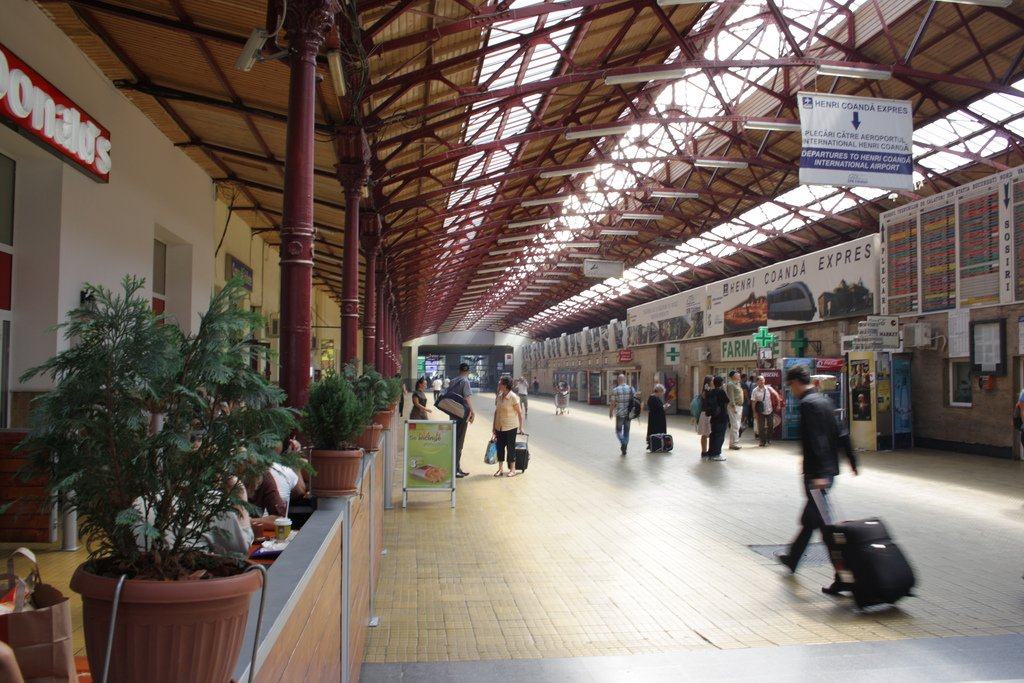
Taxis are waiting at the end of this corridor
From Gara de Nord to Bucharest city center. When arriving in the train station look for signs leading to the ‘authorised taxis’ station which is down the very long, wide and tall corridor as you arrive (pictured above). You will be approached by people offering ‘taxi’ services - refuse.
Outside the building if taxi drivers first ask where you’re going and then try to negotiate the fare, refuse. If you can’t find a decent taxi, use Uber or Bolt.
Getting to Gara de Nord. The North Train Station is located in the North-Western part of Bucharest. You can get there using the yellow metro line and get off at Gara de Nord station. For a cost of 4-6 Euros, a taxi or an Uber is a better and more convenient choice than taking the bus, and sometimes quicker than using the metro.
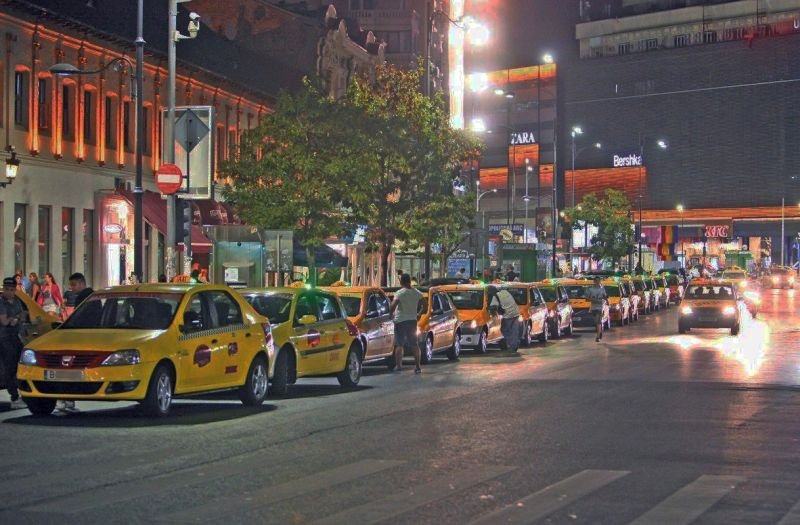
Taxis waiting in the Old Town area
7. Bucharest taxis: costs, tips, safety and apps
The first piece of honest truth - Bucharest taxis should be treated with caution because their reputation is notoriously bad for many good reasons. But if you follow my advice below on how to order a taxi in Bucharest like a local you’ll see how easy and safe it can be to use them and avoid bad experiences.
The second honest truth is that taxis are a very cheap and convenient way of getting around the large city of Bucharest, especially since subway stations don’t cover some parts or major tourist sights. Most rides in the city will cost 15 - 30 Lei (3-6 Euro) and other public transport such as buses and trams are not worth the effort as we'll explain below.
There are many official licensed taxi companies and their cars are yellow with the name of the company on the hood. Fares and rates are calculated per km: the lowest starts from 1,99 Lei, 2,39 Lei is standard while 4,9 Lei is for premium cars. I typically recommend these taxi companies in Bucharest: Meridian, Cristaxi or Speed Taxi.
Cost of rides should not be negotiated as fares are clearly written on both sides of the car and displayed on the meter (which should be visible) before and during the ride.
A taxi ride from Bucharest city center to Bucharest Otopeni Airport will cost about 55-75 Lei depending on which part of the city you're starting from and traffic conditions.
Tipping taxi drivers is common, as is rounding up or leaving a tip of 10% or 3-5 Lei. To put things into perspective, remember that 1 Euro = 5 Lei.
And now my most important piece of advice: everyone in Bucharest uses smartphone apps to order taxis online, and so should you. They’re easy to use, are tracked based on location and drivers have individual profiles and reviews from clients. Few problems, if any, have been reported, so they should be your go-to choice. Here are the most popular taxi apps I recommend:
- Uber works in Bucharest since 2015 and runs legally in the country. It’s cheap and reliable, with great drivers and clean cars. But because service is so great, it’s very popular and there's usually a fare surcharge because of high demand.
- Bolt is the runner-up and is the European version of Uber with almost identical features and functionalities. It’s trying to aggressively acquire market share by having even cheaper fares than Uber so it's a great value and the most widespread
Most of these apps also work in Brasov, Timisoara or Cluj-Napoca but in all other cities in Romania taxi drivers are decent, polite and safe so no need to worry.
During weekends and especially in the evening when Bucharest nightlife goes full on or on rainy days, taxis will be in very high demand so be patient and try several ways to find one.
I don't recommend getting a taxi from Bucharest to other cities such as Brasov, Constanta, Mamaia or Sinaia. You can get better prices and comfort in a train, bus or even a private tour.
Other safety tips when using regular taxis in Bucharest:
- make sure the driver turns on the meter when starting the ride and get out if he doesn’t or says it’s not working
- have small notes (1-5-10 Lei) on you to pay the fare as one of the most often used tricks is drivers saying they don’t have change
- avoid if possible picking up taxis waiting in the Old Town/Lipscani area or North Train Station - they're the ones trying to scam tourists by overcharging; try ordering instead
- try to be, as much as possible, informed about your route or at least have Google Maps ready when using a standard taxi.
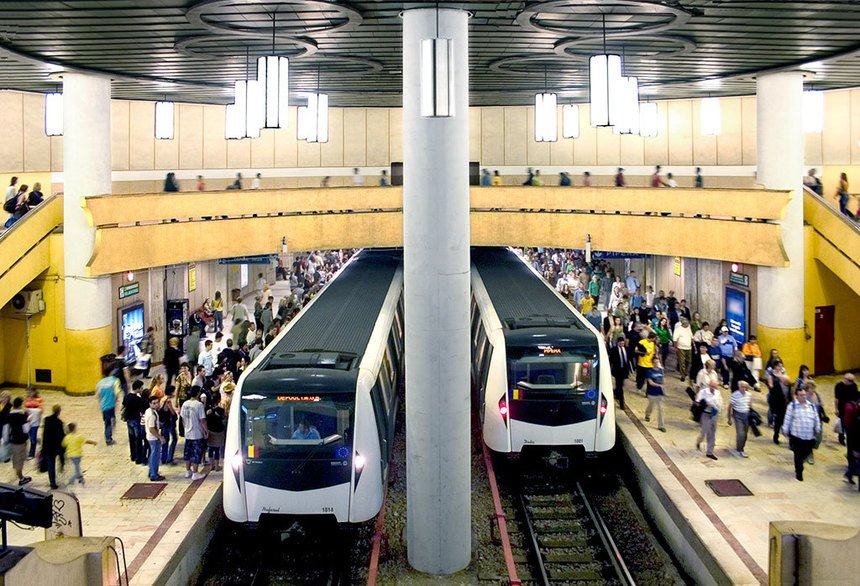
8. Bucharest metro & public transport
Using the metro lines of Bucharest (metrou) is easy, reliable and fairly cheap. It’s by far the best way to get around Bucharest during rush hours or for long distances (e.g from Old Town to Herestrau Park). Of course, this makes the metro very crowded in the morning and evening when people are commuting to-from work.
There are 4 lines (M1-4) but the ones important for tourists are M1 (yellow) and M2 (blue). Getting on the right metro should be easy as there is only one train running on each line in a single direction. If in doubt, ask locals. All metro stations are underground, have accessibility options and are marked with a blue M on a white square.
The city centre is served only by 4 stops and there are some areas of Bucharest with tourist sights not covered at all by the subway. The metro stations close to the main tourist sights are Piata Unirii, Piata Universitatii, Piata Romana and Piata Victoriei (the 4 I mentioned), Izvor and Aviatorilor. Check the full map here. Distances between stations can be quite long (10-20 min walk).
Service is between 5:00-23:00 and trains run every 3-5 minutes during rush hours and 5-10 minutes during off-peak hours and weekends.
Tickets are paper-printed and you need to validate them when entering the station, otherwise you can’t get in. A ticket with 2 rides costs 6 Lei (1,5 Euro) but your best choice is to get the 10 ride ticket for 25 Lei (5 Euro). 24 hours or 72 hours tickets are also available for 2 or 4 Euro which is great if you're on a city break.
You can also use your contactless bank card to pay for a 3 Lei ride on the spot without having to pass by the ticket office. Extremely cheap compared to anything else in Europe!
The public transport network in Bucharest is made out of hundreds of buses, trolleys and trams, all operated by STB. For tourists they are very confusing and hard to use, because there are no clear maps, guides, or English-speaking people or drivers working for STB and able to give precise guidance to non-locals. I recommend you download Info TB app to check the routes. You can even see where the buses are so you can approximate how much time you'll have to wait for one.
Buses and trolleys don’t always have a dedicated lane so they get stuck in traffic. Drivers sometimes illegally use tram lines so trams get stuck in traffic too. And overground traffic in Bucharest is already heavy and crowded. So despite being very cheap to use, the hassle of getting on the right one, waiting ages for them to show up and getting stuck in traffic is not worth it. Except for regular commuters, most locals don’t use them so my best advice is to stick to metro and taxis.
***
I hope this guide will help you plan your trip to Bucharest and further on in Romania! Check our website for other useful info and inspiration on Romania tourist attractions.
Your Romanian Friend
Marius
